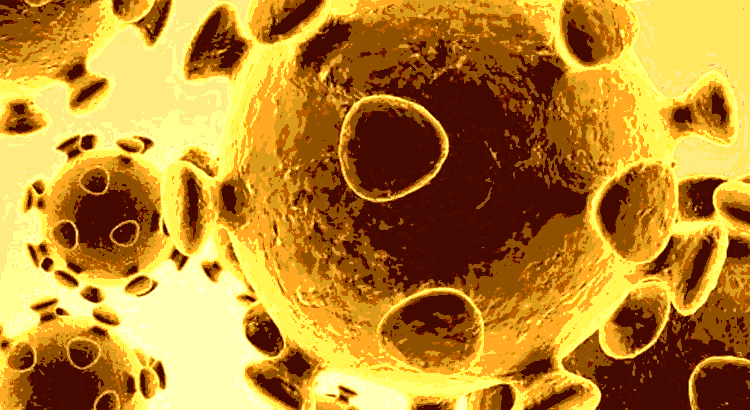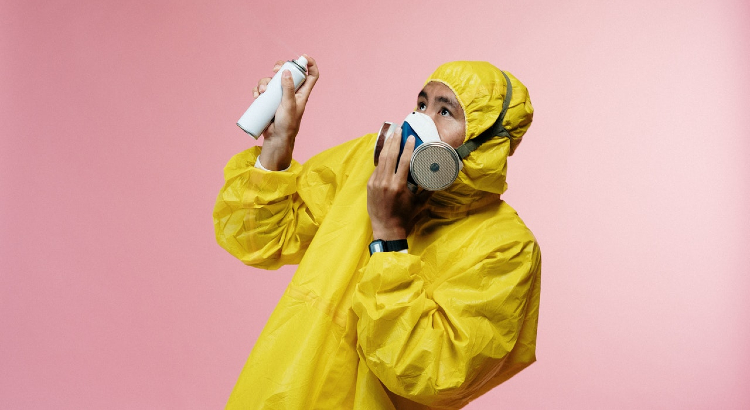Toxicologists and healthy building advocates are raising concerns about an overemphasis on disinfectants as a silver bullet in the fight against coronavirus in indoor spaces.
Articles in both trade and popular media have been highlighting the use of surface disinfectants to combat the SARS-CoV-2 virus as commercial buildings reopen. Meanwhile, public health experts say those products — many of which contain hazardous chemicals — should play a limited, secondary role in any protection plan.
Earlier this month, the federal Centers for Disease Control and Environmental Protection Agency jointly issued “Guidance for Cleaning and Disinfecting Public Spaces, Workplaces and Businesses, Schools, and Homes” as a tipsheet for building owners and operators. The document features a decision tree that advises cleaning personnel to “consider setting a schedule” that includes disinfection only for “frequently touched” surfaces and objects.
Those recommendations are consistent with the advice of independent toxicologists and epidemiologists, who stress the importance of thoroughly cleaning surfaces with soap prior to the use of chemical disinfectants.
The concern that disinfectants are being overemphasized is separate from a warning by some building professionals that public health authorities have meanwhile under-emphasized the role that ventilation, filtration and mechanical solutions can play in protecting occupants from coronativus. (We report on that controversy here.)
Given recent findings that the virus that causes the COVID-19 disease is spread prevelantly through the indoor air person-to-person, public health experts are placing the heaviest emphasis on discouraging risky behavior by building occupants.
“Social distancing and wearing a mask — all those things — definitely should be the first part of the equation,” says Teresa McGrath, chief research officer at the Healthy Building Network. “If you find yourself in a situation where you’re touching [people], soap and water is your next and very effective step.”
Soap before disinfectant
The soap-and-water rule applies to surfaces as much as to persons. Not only do soaps remove layers of dirt that may shelter the virus; they also contain surfactants, which are known to break down the fatty walls of the coronavirus cells.
Given the pandemic, disinfectants are likely to be a part of any cleaning regimen for a commercial building. Even on frequently touched surfaces, however, disinfectants are only fully effective if a surface is first cleaned with soap.
In addition, McGrath notes, disinfectants “are all equal in one way but they’re not created equal.”
They’re equal in the sense that to label its product as a disinfectant, the manufacturer must demonstrate to the Environmental Protection Agency through laboratory testing that it “destroys or irreversibly inactivates bacteria, fungi and viruses, but not necessarily bacterial spores, in the inanimate environment.”
Most commercial cleansers labeled disinfectants are classified as “general disinfectants” meaning they’ve been tested on a broad spectrum of pathogens. While instructions for use may vary, all disinfectants — if properly applied — should have been tested to kill 99.99 percent of each class of microbes that they target.
“Properly applied” is a big “if,” however. Instructions vary by product. Almost all disinfectants require clean surfaces to work properly, and the instructions assume that they’re mixed properly.
In addition, they’re supposed to sit on the surface for a minimum amount of time before being wiped off. For State Triple Quick, a popular and highly toxic commercial disinfectant, the contact time is three minutes. Contrec Citric Acid Disinfectant, which is less hazardous to humans, requires five minutes. Often instructions are unclear: They might state, for example, that a product “sanitizes” within a minute — the problem being that sanitation doesn’t kill pathogens to the same level as disinfection.
Navigating the hazards of disinfectants
At the same time, McGrath notes, disinfectants are “unequal” in the sense that some present significant hazards themselves, and some don’t.
One indication of the danger posed by toxic cleaning agents came early during the pandemic. Poison centers nationwide reported upticks in emergency calls associated with cleaning materials. One common problem is for users to mix one disinfectant with another or with different cleaners, creating chemical reactions that emit toxic fumes or even cause explosions.
Some of the most popular disinfectants pose less obvious long-term hazards. Those containing sodium hypochlorite can react with water to create byproducts that are associated with both reproductive problems and cancer. Quaternary ammonium compounds, known as “quats,” have been directly associated with reproductive problems and early deaths in laboratory animals.
Despite labeling requirements, it’s often not easy to figure out whether a product contains a particular class of hazardous chemicals. Many chemicals are quats, for example, but nothing in their name suggests to the layperson that the pesticides named on the label are quaternary ammonium compounds.
RELATED STORY
COVID-19 in the office: A Guide to Guides
McGrath suggests limiting risk by using disinfectants sparingly and by turning to products that are built around less harmful ingredients. As a toxicologist at the EPA prior to joining the Healthy Building Network, she helped to set up the agency’s Design for the Environment program, which develops tools to help users evaluate the health and environmental hazards of chemicals in products.
To find disinfectants that kill SARS-CoV-2 while presenting low toxic hazards, McGrath suggested cross-referencing EPA‘s “ List N: Disinfectants for Use Against SARS-CoV-2” and disinfectants on the the agency’s list of “Design for the Environment Logo for Antimicrobial Pesticide Products.” (More information about selecting disinfectants can be found on our Guide to Guides on COVID-19 and office reopenings.)
Other researchers point to alternative technologies. The Toxic Use Reduction Institute at the University of Massachusetts Lowell recently completed a COVID-19 plan for its own reopening that it’s offering as a model that others might follow.
TURI is testing a surface disinfectant in its own office that relies on electrochemical activation. Such “ECA” units feature a water and salt combination to create a cleaner and a nontoxic disinfectant. While even the miniature unit that TURI is testing has an initial higher cost than conventional disinfectants, the manufacturer notes that it’s inexpensive to reload.
Personal protection is more important
As building operators consider which disinfectants to use and when, there’s a risk that the discussion itself overshadows other safety measures. In part to place the various protective measures in perspective, we’ve assembled a “Guide of Guides” that will take building owners, property managers and office managers through the steps recommend to reopen and operate offices during the pandemic.
But one point is pretty straightforward: ll the experts seem to agree that the first line of defense for building owners and operators isn’t disinfectants. Instead, it’s to encourage the steps we’ve all been implored to follow for the last couple of months: washing hands well with soap, keeping at least six feet from each other, wearing facemasks, and wearing gloves if activities involve touching surfaces or items that may have been touched by others.
PHOTO AT TOP: By cottonbro via Pexels license.


